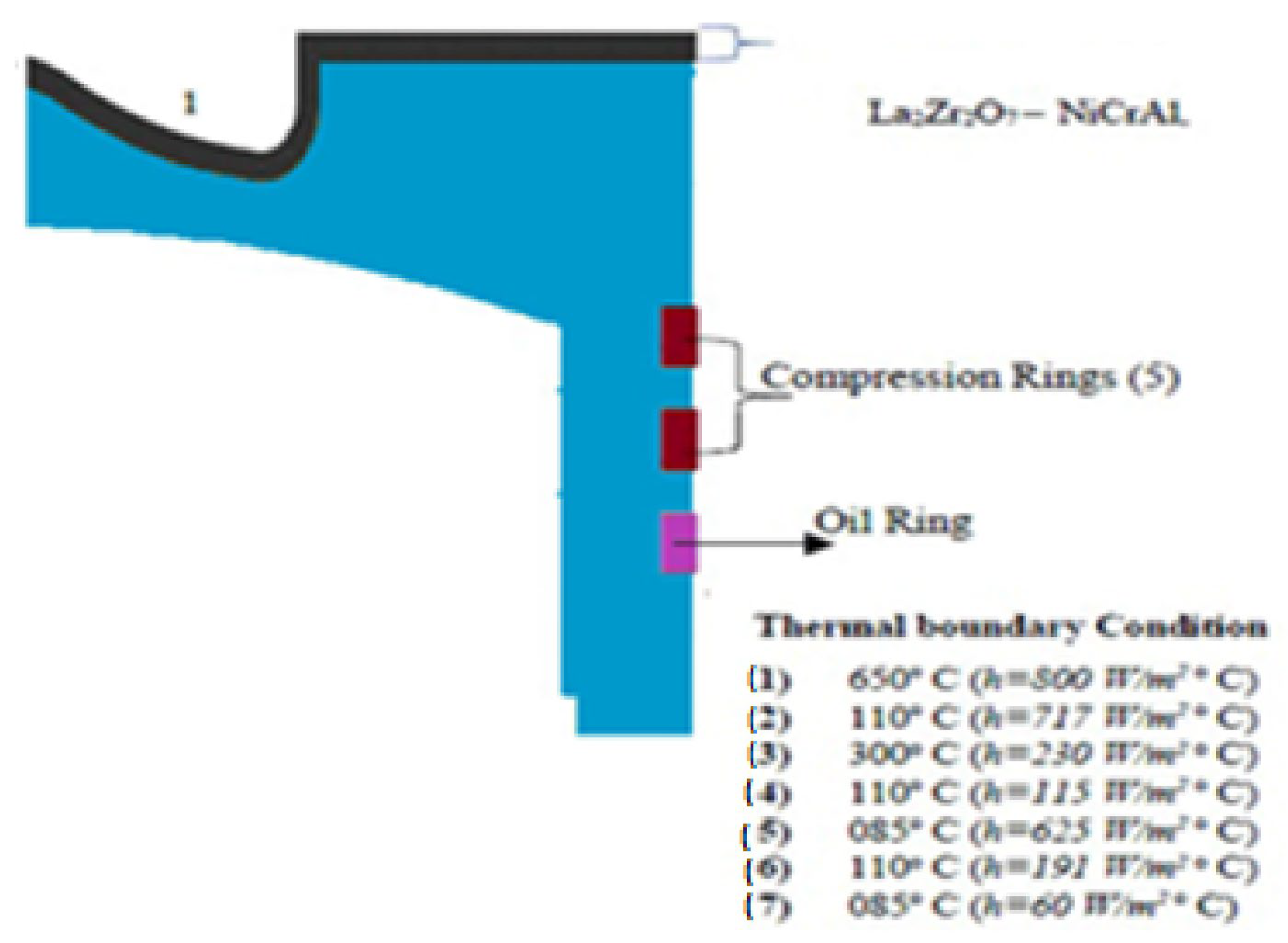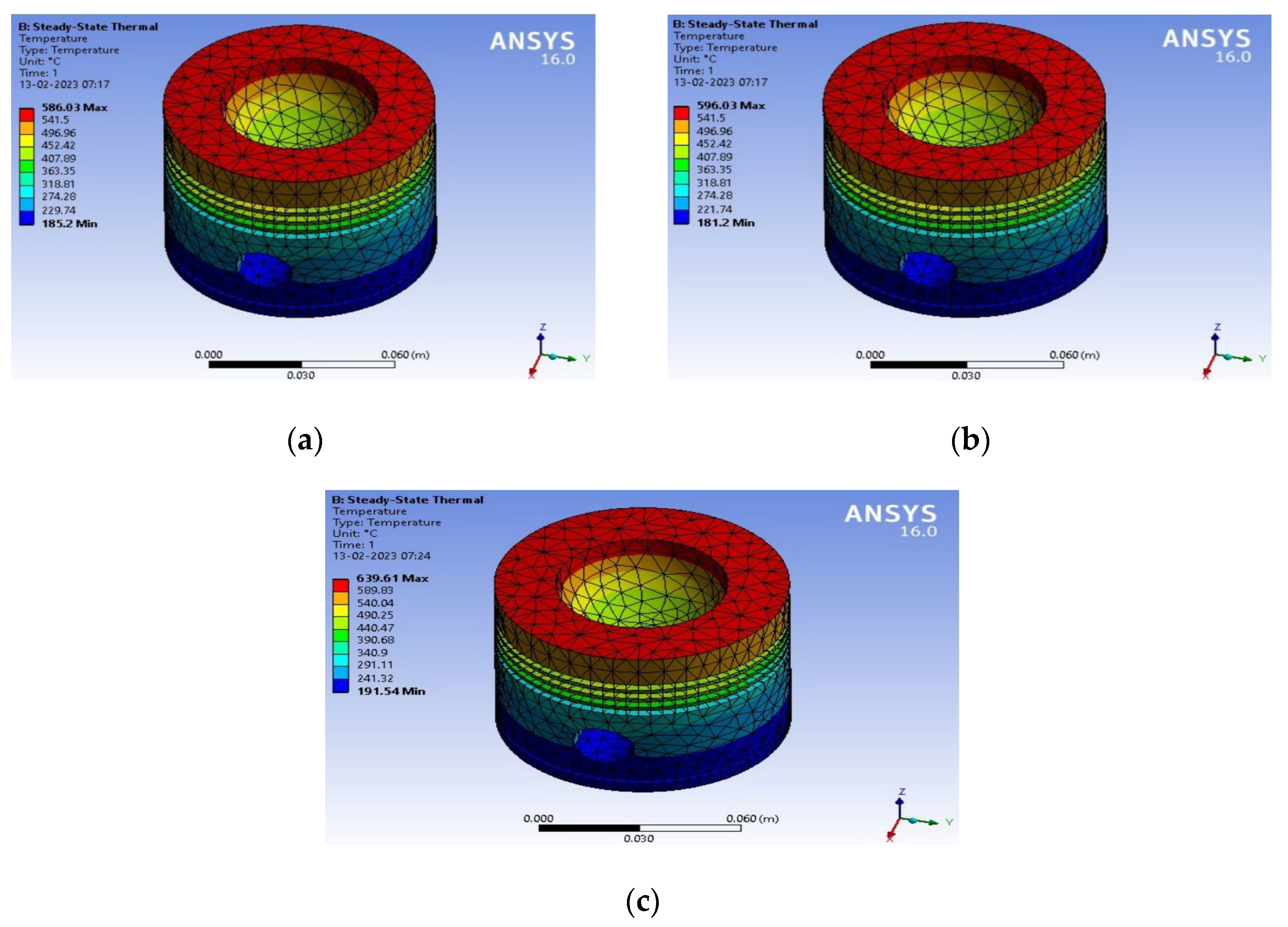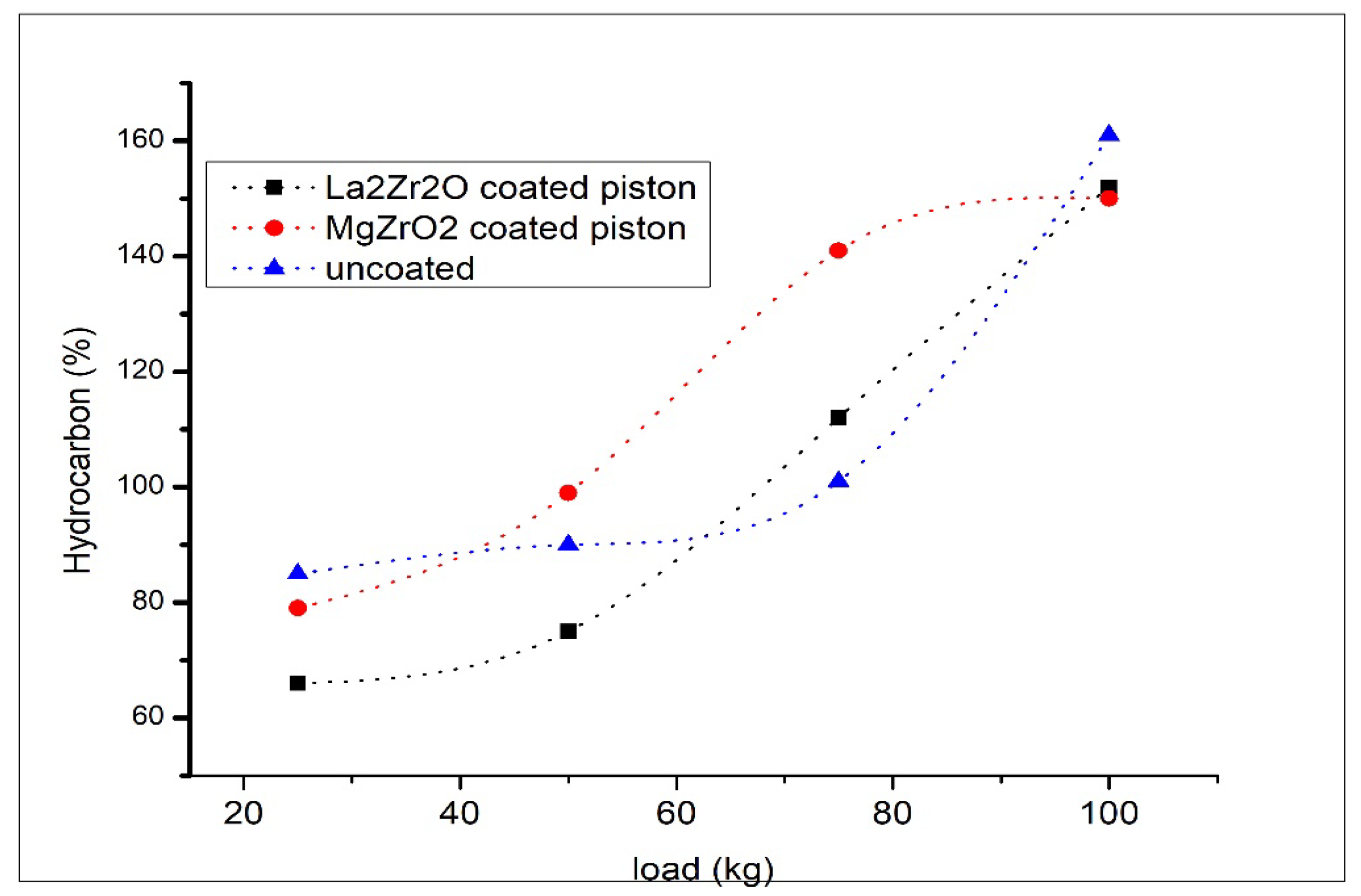Three-Dimensional Design and Prediction of Temperature Distribution of a Partially Ceramic Coated Piston Used in Homogeneous Charge Compression Ignition Engine †
Abstract
:1. Introduction
2. Materials and Methods
2.1. Temperature Modeling of a Piston
2.2. Steady-State Heat Transfer
3. Results and Discussion
3.1. Thermal–Stress Investigation of Piston
3.2. HC Emissions
4. Conclusions
Author Contributions
Funding
Institutional Review Board Statement
Informed Consent Statement
Data Availability Statement
Conflicts of Interest
References
- Nobakht, A.Y.; Saray, R.K.; Rahimi, A. Parametric Study on Natural Gas Fueled HCCI Combustion Engine Using a Multi-Zone Combustion Model. Fuel 2011, 90, 1508–1514. [Google Scholar] [CrossRef]
- Abdul Gafoor, C.P.; Gupta, R. Numerical Investigation of Piston Bowl Geometry and Swirl Ratio on Emission from Diesel Engines. Energy Convers. Manag. 2015, 101, 541–551. [Google Scholar] [CrossRef]
- Karthikeya Sharma, T.; Amba Prasad Rao, G.; Madhu Murthy, K. Influence of Piston Bowl Shape on Flow and Combustion Characteristics in HCCI Engine: A CFD Study. In Proceedings of the International Conference on New Frontiers in Chemical, Energy and Environmental Engineering INCEEE, NIT, Warangal, India, 21 March 2015. [Google Scholar]
- Liu, J.; Zhang, Y.; Liao, B. A review on preparation process and tribological performance of coatings for internal combustion engine piston ring. Adv. Mech. Eng. 2023, 15, 16878132231175752. [Google Scholar] [CrossRef]
- Khan, S.N.; Usman, A.; Afzal, M.S.; Tanveer, M.; Liwicki, M.; Almqvist, A.; Park, C.W. Numerical Investigation of Thermomechanical Behavior of Yttrium Barium Zirconate-coated Aluminum Alloy Piston in an Internal Combustion Engine. Appl. Therm. Eng. 2023, 236, 121603. [Google Scholar] [CrossRef]
- Pandey, K.K. Thermal and experimental analyses of thermal barrier coated pistons. Int. J. Model. Simul. 2023, 1–19. [Google Scholar] [CrossRef]





Disclaimer/Publisher’s Note: The statements, opinions and data contained in all publications are solely those of the individual author(s) and contributor(s) and not of MDPI and/or the editor(s). MDPI and/or the editor(s) disclaim responsibility for any injury to people or property resulting from any ideas, methods, instructions or products referred to in the content. |
© 2024 by the authors. Licensee MDPI, Basel, Switzerland. This article is an open access article distributed under the terms and conditions of the Creative Commons Attribution (CC BY) license (https://creativecommons.org/licenses/by/4.0/).
Share and Cite
Sakthi Rajan, C.; Venkatesh, J.; Jayakumar, K.; Prakash Kanna, G. Three-Dimensional Design and Prediction of Temperature Distribution of a Partially Ceramic Coated Piston Used in Homogeneous Charge Compression Ignition Engine. Eng. Proc. 2024, 61, 21. https://doi.org/10.3390/engproc2024061021
Sakthi Rajan C, Venkatesh J, Jayakumar K, Prakash Kanna G. Three-Dimensional Design and Prediction of Temperature Distribution of a Partially Ceramic Coated Piston Used in Homogeneous Charge Compression Ignition Engine. Engineering Proceedings. 2024; 61(1):21. https://doi.org/10.3390/engproc2024061021
Chicago/Turabian StyleSakthi Rajan, C., J. Venkatesh, K. Jayakumar, and G. Prakash Kanna. 2024. "Three-Dimensional Design and Prediction of Temperature Distribution of a Partially Ceramic Coated Piston Used in Homogeneous Charge Compression Ignition Engine" Engineering Proceedings 61, no. 1: 21. https://doi.org/10.3390/engproc2024061021
APA StyleSakthi Rajan, C., Venkatesh, J., Jayakumar, K., & Prakash Kanna, G. (2024). Three-Dimensional Design and Prediction of Temperature Distribution of a Partially Ceramic Coated Piston Used in Homogeneous Charge Compression Ignition Engine. Engineering Proceedings, 61(1), 21. https://doi.org/10.3390/engproc2024061021





